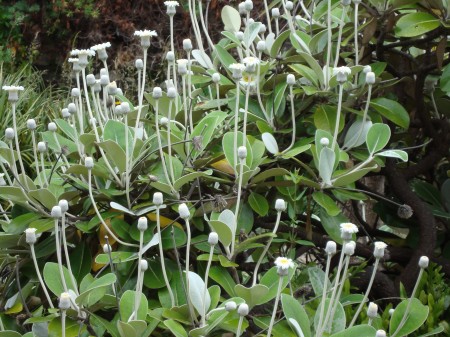Natural Herbal Remedies
‘Hawthorne for the Heart’s Woes’, methinks. Hawthorn is considered by many herbalists to be ‘the traditional organ remedy for the heart’, whether the problem be of a physical or emotional origin.
As my Uncle Ivor used to say, ‘It’s very good for what’s wrong with you’.
Botanical names for Hawthorn: Crataegus Oxyacantha. Crataegus Monogyna.
The common Hawthorn is also known as the ‘Mayflower’, because it flowers in May, in Britain, from whence it originates. The famous pilgrim ship to America was named ‘The Mayflower’ after the English Hawthorn bush.
Hawthorn is a wonderful remedy which has been known since ancient Roman times. For strengthening the heart, for circulation problems, and stabilizing the blood pressure, there is no other herb that can beat Hawthorn for its safe and tonic effect.
It was known as a gout medicine around 1695, according to Robert Barnett. He also says that Hawthorn is used in Chinese medicine for what they call ‘food stagnation’ of the gut and intestines.
Homeopathic Crataegus Homeopaths often use Hawthorn (Crataegus) combined with Arnica, which is considered to be a mild heart tonic.
General Tonic For The Blood: Hawthorn Berries and the leaves are rich in antioxidant flavanoids. These chemicals, plus its abundant Vitamin C and B content, and trace elements such as iron, make the Hawthorn a great blood cleanser and general tonic.
Insomnia and Nervous Depression: Hawthorn can be helpful as a tonic for the relief of these aforesaid conditions, since Hawthorn has a mildly sedative effect on the nervous system. The homeopathic combination of Crataegus and Arnica would be an efficacious remedy for treating nervous conditions and insomnia: The Arnica would enhance the sedative and calming effect of Hawthorn.
High Blood Pressure: People suffering hypertension, or high blood pressure, would do well to begin drinking Hawthorn tea, simply made with the Hawthorn leaves and mixed with some peppermint or spearmint herb for flavour. Below is a recipe to make palatable Hawthorn tea.
Note: Do not begin using Hawthorn tea, or using the tincture, if you are already on prescription medicine of some sort. Doubling up on a remedy which affects blood pressure may not be helpful. The cardiac glycoside drugs such as Digitalis or Digoxin should not be mixed with herbal medicines which will do the same thing. Ask your doctor or naturopath about using Hawthorn if you are taking medication.
Low Blood Pressure: Hawthorn Tea is equally good for treating low blood pressure, according to Louise Tenney and other herbalists.
Hypoglycaemia: Whilst Hawthorn can be helpful for normalizing either low or high blood pressure, it can also have a stabilizing effect on the blood sugar levels. It is a useful herb for treating hypoglycaemia, when the blood sugar levels plummet from high to low, leaving the person feeling lifeless and depressed.
Tasty Hawthorn Tea Combination
Crumble 1/4 cup of dried Hawthorn leaves into the teapot. You can use your fermented leaves if you have them – see the previous post on making fermented Hawthorn tea leaves.
Add 1/4 cup of fresh or dried Peppermint or Spearmint leaves.
Pour over 4 cups of boiling water.
Leave to infuse for 5 minutes, then add the juice of one lemon and a tablespoonful of honey.
Drink one cup of this tea three or four times a day as a general tonic.
Hawthorne Tea To Help Lower Blood Pressure
Pour 250 mls of boiling water over either dried leaves, flowers or berries of Hawthorn, or a mixture of these.
Infuse for 20 minutes, then strain off the tea. Drink two or three cups of cold tea per day over a period of around two months or so to help reduce high blood pressure. (see ‘Your Complete Guide To Natural Health’)
Hawthorn Tea To Help Angina and Arrhythmias
Use two teaspoons of Hawthorn berries. Pour over 250 mls of boiling water and leave to infuse for twenty minutes.
Strain the tea. Drink cold.
‘Your Complete Guide To Natural Health’ recommends drinking two or three cupsful of this tea each day, one cup at a time, of course, for around two months or so, for the effect of helping the conditions of angina and arrhythmias.
Home Made Hawthorn Tincture – Heart Remedy
See the previous post for another method of making Hawthorn tincture. This simple recipe here below is adapted from one found in ‘Your Complete Guide To Natural Health’. International Masters Publishers, Auckland, NZ. No date.
Take a clean jar with a screw top lid.
Put in 20 gms of dried Hawthorn, leaves and flowers. Crumble the herbs a little.
Cover the herbs with vodka.
Screw on the lid.
Shake every day for 10 days.
Strain into a clean, dry bottle.
To strengthen the heart, take between 20 to 40 drops in a little water three times a day.
My new book is available on Amazon:





